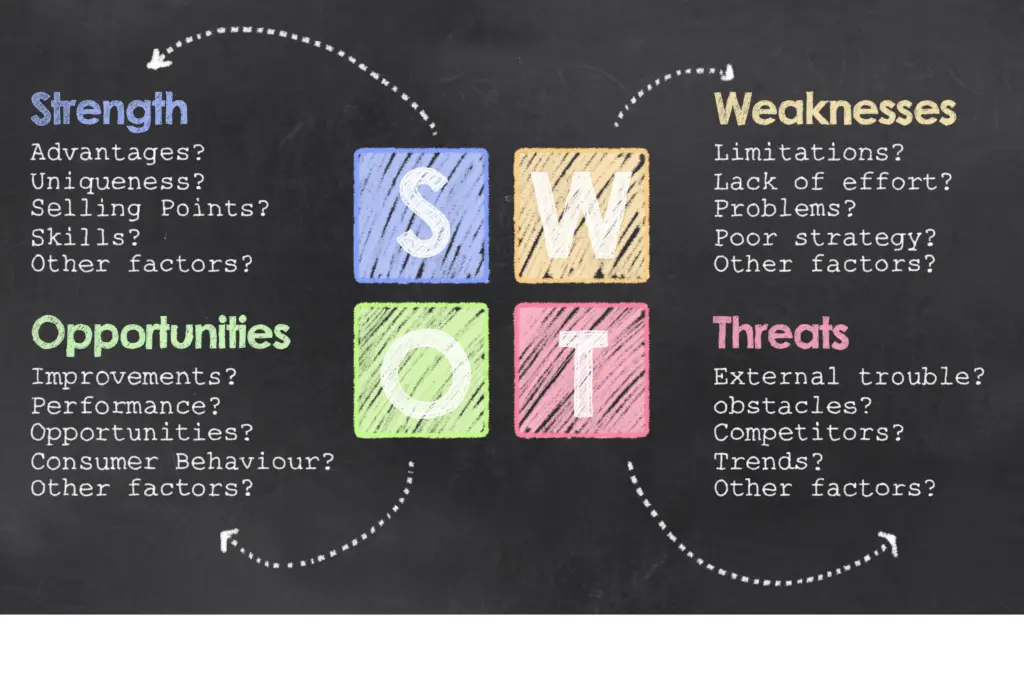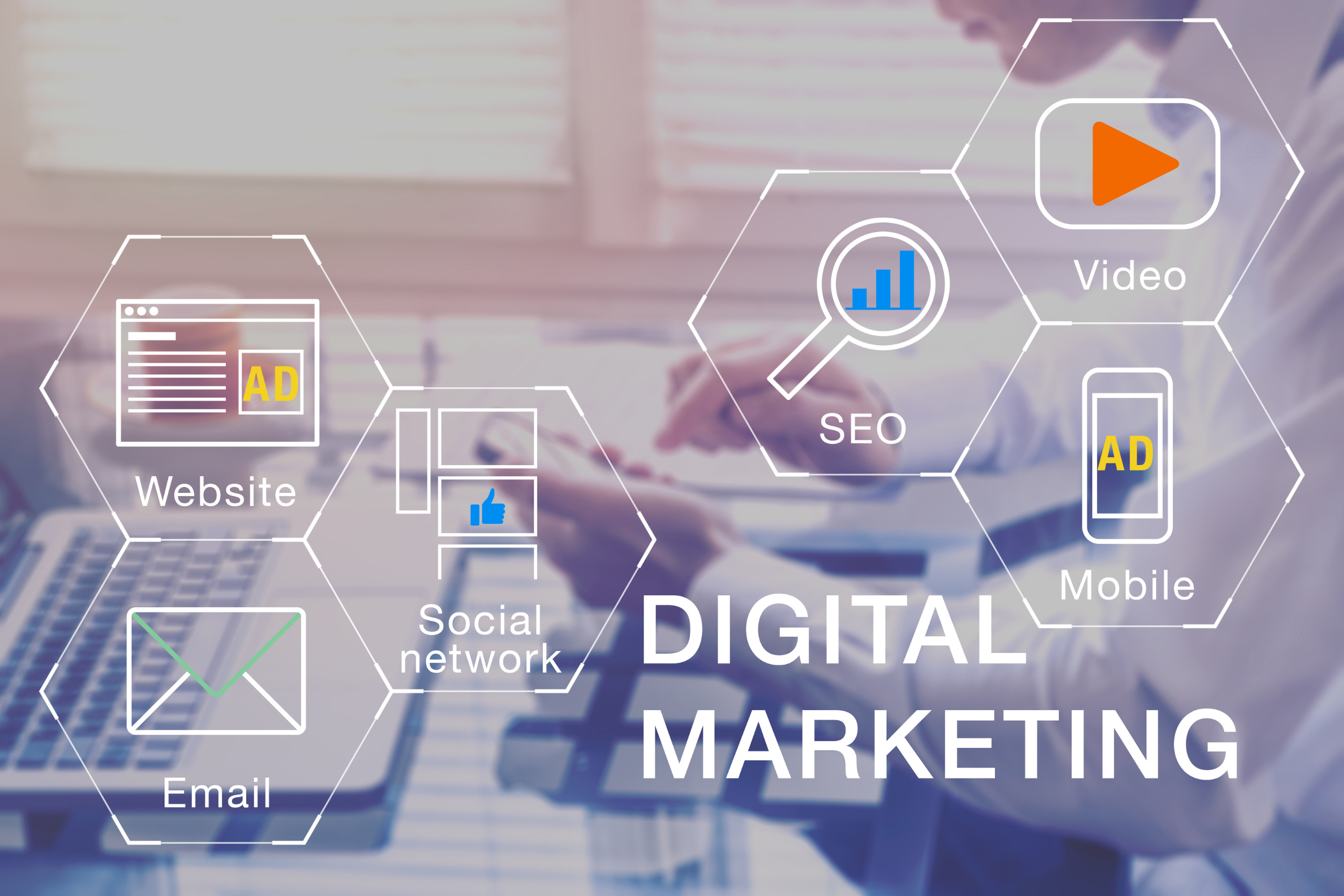Starting your own business is a big deal – it’s exciting, a bit scary, but totally worth it. You’re probably wondering, “Where do I even start? How do I start a business?”
Don’t worry; we’ve got you covered. Think of this as your buddy guide to launching your dream. We’re going to walk through this together, step by step. From nailing down your business idea to getting it off the ground and watching it grow, this guide is like chatting over coffee about getting your business rolling.
Table of Contents
Before You Begin: Get in the Right Mindset
Embarking on a business venture is both thrilling and challenging. Before diving in, it’s crucial to understand that behind every “overnight success” is a backdrop of preparation and hard work. Success stories often skip the long planning, dedication, and resilience journey. As a new entrepreneur, focusing on your unique journey and measuring success on your own terms is vital.
Consistency Is Key
Initial enthusiasm can fuel the early days of your business venture, but sustaining that momentum is what truly counts. It’s normal for motivation to fluctuate; hence, establishing consistent habits and routines is crucial. These practices will keep you moving forward, even when the initial excitement wanes.
Take the Next Step
In business, some plunge in without a plan, while others get paralyzed by over-analysis. The sweet spot often lies somewhere in between. Break down your business goals into smaller, actionable steps to achieve them. Organize these steps in order of priority. While some tasks may be quick, others might require more time and effort. The key is to move forward, continuously taking one step at a time.

1. Determine Your Business Concept
Turning a passion into a business is common advice, but it’s also important to consider the profitability and your skill set in that area. For instance, loving music doesn’t guarantee success in the music industry if you’re not skilled in it. Or, opening a soap shop in a market already saturated with similar offerings might limit your potential.
To refine or find your business idea, ask yourself these questions:
- What are your passions and dislikes?
- What skills or talents are you known for?
- Is there a way to make routine tasks easier or more enjoyable?
- What topic would you choose if you had to give an impromptu short speech?
- What have you always wanted to do but couldn’t due to resource constraints?
These questions can help shape or expand your business idea. Ensure that your idea aligns with your passions and strengths and holds potential for profit. Remember, your business doesn’t need to reinvent the wheel. Sometimes, improving an existing product or offering a digital product can be a smart move, minimizing overhead costs while maximizing reach and efficiency.
What Kind of Business Should You Start?
So, you’re thinking about starting a business but unsure what kind? Let’s break it down. First, think about what you’ve got in your toolbox:
- Funding: How much cash can you put in?
- Time: Can you dive in full-time, or is this a side gig?
- Location: Home office, buzzing workplace, or maybe a workshop?
- Passions and Interests: What gets you excited? Could it make money?
- Skills: Got any special talents or know-how?
- Inventory: Do you want to deal with inventory or not?
- Scale: Dreaming big or keeping it cozy?
- Support: Who’s got your back?
- Partnership: Going solo or teaming up?
- Franchise: Does buying into an existing brand appeal to you?
Popular Business Ideas
If you’re still scratching your head, here are some hot business ideas to consider:
- Franchise: Buy into a ready-made brand.
- Blog: Share your thoughts and passions online.
- Online Store: Sell products to the world from your living room.
- Dropshipping: Sell stuff without the hassle of inventory.
- Cleaning Business: Everyone loves a clean space, right?
- Bookkeeping: Got a knack for numbers?
- Clothing Business: Fashion forward? Make it your business.
- Landscaping: Got a green thumb? Turn it into green cash.
- Consulting: Share your expert advice.
- Photography: Turn your eye for images into income.
- Vending Machine: Passive income while people snack.

2. Research Your Competitors and Market
You’ve got a great idea, but what about the competition? Understanding your rivals is just as important as knowing your product. Here’s how to get the lowdown:
Primary Research
Hit the ground running with primary research. This means getting info straight from the source – your potential customers. Use surveys, interviews, or questionnaires. But remember, your friends and family might not always be your target market. Real customer opinions matter the most.
Secondary Research
This is all about digging into existing data – think things like census data. It’s super useful but might not be as specific as the insights you get from primary research.
Conduct a SWOT Analysis
SWOT stands for Strengths, Weaknesses, Opportunities, and Threats. It’s like taking an x-ray of your business idea. You’ll get to see the good, the not-so-good, and everything in between. It can show you how to improve your product compared to the competition’s or maybe even spot a gap they’ve missed.

3. Create Your Business Plan
Creating a well-rounded business plan is vital in establishing your new business. It provides you, potential investors, and financial institutions with a clear roadmap. Here’s a breakdown of what to include in your business plan:
- Executive Summary: This is the overview of your business. Although it appears first in your business plan, you should write it last. It outlines your business concept, the goals you aim to achieve, and how you plan to achieve them.
- Company Description: Discuss the problems your product or service solves, why your business is the best solution, and your unique qualifications. For instance, if your expertise in molecular engineering led you to develop a new type of athletic wear, detail that here.
- Market Analysis: Analyze your business’s position relative to competitors. This should include an assessment of your target market, market size, growth trends, and a competitive analysis.
- Organization and Structure: Describe your business’s organizational structure. Detail the management team and their qualifications, your business organization type (LLC, corporation, etc.), and any risk management strategies.
- Mission and Goals: State your business’s mission and outline specific, measurable, achievable, realistic, and time-bound (SMART) goals.
- Products or Services: Explain what you’ll offer, how your offerings compare to competitors, pricing strategies, manufacturing processes, and material sourcing.
- Background Summary: This section requires thorough research. Compile data, articles, and studies on industry trends and how they might affect your business.
- Marketing Plan: This includes how you’ll promote your business, the budget for marketing, campaign duration, a SWOT analysis, and how you stand against competitors.
- Financial Plan: The financial backbone of your plan. Include your proposed budget and projected financial statements like income statements, balance sheets, and cash flow statements for the next five years. If seeking funding, include a funding request here.
Exit Strategy
Yeah, it might seem weird to think about the exit while you’re just getting in. But trust me, it’s important. It’s about how you plan to sell or pass on your business when it comes. Selling, handing it down, liquidating assets, or simply closing shop – know your exit.
So, there you have it. A business plan is your roadmap, pitch, and guide all rolled into one. It’s what turns your ‘someday’ into ‘today.’
Developing a Scalable Business Model
As your small business grows, it’s important to have a scalable business model to accommodate additional customers without taking on a large amount of additional costs. A scalable business model is key to growing your small business without significantly increasing costs. Here are some models to consider:
- Subscription-Based Businesses: These generate recurring revenue, providing a steady income stream.
- Businesses Selling Digital Products: Ideal for products that don’t require physical inventory, allowing easier scaling.
- Franchise Businesses: Expand your brand’s reach through other operators without directly managing new locations.
- Network Marketing Businesses: Relies on sales reps or distributors, expanding through a network.
Start Planning for Taxes
Taxes can be complex. Based on your business type, it’s important to understand the various types, including income, self-employment, sales, property, payroll, and unemployment taxes.

4. Choosing Your Business Structure
The structure you choose affects your taxes, operations, and personal liability. Consider these structures:
LLC (Limited Liability Company)
An LLC provides personal liability protection for its owners and offers flexibility in management and tax options. It’s a popular choice for small to medium-sized businesses due to its ease of setup and minimal ongoing requirements.
Pros:
- Liability protection for owners.
- Simplicity in setting up and managing.
- Suitable for single-member LLCs.
Cons:
- Requires regular state filings and annual fees.
- Can’t issue stock.
- Profits may be subject to self-employment taxes.
LLP (Limited Liability Partnership)
Ideal for professional service firms, an LLP protects each partner from debts against the partnership and requires less paperwork. It allows partners to have limited personal liability while actively participating in business management
Pros:
- Limited liability for debts and actions.
- Easy formation with minimal paperwork.
- No limit on the number of partners.
Cons:
- Partners must participate actively in the business.
- Cannot issue stock.
- Personal liability for malpractice claims.
Each business structure offers distinct advantages and limitations. Evaluate which one aligns with your business goals and operational needs.
Sole Proprietorship:
A sole proprietorship is the simplest business structure, where the business and owner are legally the same entity. This structure allows for complete control by the owner but also means personal liability for all business debts.
Pros:
- Simple and inexpensive to form.
- Complete control over business decisions.
Cons:
- Personal liability for business debts and obligations.
- Challenges in raising capital and potential for limited business lifespan.
Corporation:
Corporations provide personal liability protection, with taxation options as a C-corp or S-corp. C-corps are typical for larger businesses, while S-corps offer pass-through taxation for smaller enterprises.
Pros:
- Limited personal liability for business debts.
- Potentially unlimited lifespan and shareholder capacity.
Cons:
- More complex and costly to establish and maintain.
- Possibility of double taxation, especially for C-corps.
It’s important to consult with a business accountant or attorney to understand each business structure’s tax implications and legal requirements, ensuring the right fit for your business goals and needs.

5. Register Your Business and Get Licenses
Starting a business involves more than just an idea and some capital; it requires specific legal steps to ensure everything is in order. Let’s break down the crucial steps in registering your business and obtaining the necessary licenses.
Choosing and Registering Your Business Name
Your business name is your identity, so it needs to be memorable yet simple. It should also be available as a domain name to establish a consistent online presence. Remember, your business name must be unique within your state and not infringe on any existing trademarks.
Understanding Business Name vs. DBA
A DBA, or “Doing Business As,” is a fictitious business name different from your business’s legal name. For instance, if your registered business name is “Mike’s Bike Shop,” but you operate as “Mike’s Bikes,” then “Mike’s Bikes” is your DBA. Filing a DBA may be necessary with your state, county, or city government offices. A DBA can be advantageous for:
- Opening a business bank account under the business name.
- Branding your products or services.
- Obtaining a business license.
Registering Your Business Entity
To formalize your business entity, such as a corporation or LLC, you must file specific forms with your state’s business agency, usually the Secretary of State. This process involves selecting a registered agent, paying a filing fee, and receiving a certificate for legal and tax purposes.
Obtaining an Employer Identification Number (EIN)
Most businesses, except sole proprietorships without employees, require a federal employer identification number (EIN). You can apply for an EIN through the IRS, usually receiving your number promptly.
Securing Necessary Licenses and Permits
The legal requirements for your business depend on your industry and location. Most businesses require a mix of local, state, and federal licenses. It’s crucial to research and obtain all necessary licenses to operate legally. Contact your local government office or consult an attorney to understand your licensing requirements.
Remember, these steps are not just bureaucratic formalities; they lay the foundation for your business’s legal and financial structure. Each step, from choosing your business name to obtaining licenses, contributes to establishing a stable and legally compliant enterprise.

6. Fund Your Business
Finding the right funding for your business is a crucial step. Let’s explore the different funding options available, both internal and external, to determine what best suits your business needs.
Internal Funding Options
Internal funding comes from personal sources and might include:
- Personal Savings: Using money can be the quickest and least expensive funding option. However, this risks personal financial loss if the business fails.
- Credit Cards: They offer quick access to funds, but the high-interest rates can be a burden.
- Funds from Friends and Family: Borrowing from friends and family can be a more accessible option, but it risks personal relationships if the business doesn’t succeed.
External Funding Sources
External funding provides alternative resources, but they often come with obligations or specific criteria:
- Small Business Loans: These loans from banks or other financial institutions can provide significant funding, but they require repayment with interest.
- Small Business Grants: Grants, often provided by governments or foundations, don’t require repayment but may have stringent qualifying criteria.
- Angel Investors: Individual investors who provide capital in exchange for equity or convertible debt.
- Venture Capital: This is funding from firms or funds that invest in startups, typically in exchange for equity.
- Crowdfunding: A way to raise small amounts of money from many people, typically via the internet.
Creative Funding Ideas
- Invoice Factoring: This involves selling your unpaid invoices at a discount to get immediate cash.
- Business Lines of Credit: Similar to personal credit lines but based on your business’s finances.
- Equipment Financing: For purchasing necessary equipment, either through loans or leases.
- SBA Microloans: These are small loans, typically up to $50,000, offered by the Small Business Administration for various business purposes.
- Grants: Look for government or local grants designed to support businesses in specific sectors or regions.
- Crowdfunding: A popular way to raise funds from the general public for your business idea or project.
When choosing a funding source, consider how much money you need, the repayment timeline, and your tolerance for risk. Remember, the goal is profitability. For example, earning a six-figure income is more beneficial than making seven figures but retaining only a fraction of it. Carefully weigh each option to find your business’s most suitable funding strategy.

7. Get the Right Business Tools
Equipping your business with the right tools is crucial for efficiency and growth. Let’s dive into some essential tools that can streamline operations, enhance productivity, and foster better customer relationships.
Depending on the type of business that you will run, here are some of the business tools that you may need:
- Accounting Software: Essential for tracking income and expenses, preparing financial statements, and managing taxes. Popular options include QuickBooks and FreshBooks. They offer user-friendly interfaces and integrate with other business tools.
- Customer Relationship Management (CRM) Software: This tool helps manage customer data, track sales, and automate marketing and customer service activities. Effective CRMs, like Zoho CRM and monday.com, offer insights into customer behaviors and sales trends.
- Project Management Software: Tools like Airtable and ClickUp are vital for planning, executing, and monitoring projects. They enable task management, resource allocation, and team collaboration, ensuring projects stay on track.
- Credit Card Processor: To accommodate customer payment preferences, services like Stripe and PayPal allow you to process credit card payments smoothly and securely.
- Point of Sale (POS) System: A robust POS system, such as Clover or Lightspeed, streamlines payment processing and integrates with inventory and accounting systems.
- Virtual Private Network (VPN): For businesses handling sensitive data, a VPN like NordVPN or ExpressVPN is crucial for securing online activities and protecting data privacy.
- Merchant Services: Utilize services like Square or Stripe for depositing customer payments directly into your business account and managing recurring billing or subscriptions.
- Email Hosting: Professional email services, such as G Suite or Microsoft Office 365, offer custom email addresses with your domain, enhancing your business’s credibility.

8. Market Your Business
Marketing is as crucial as product development. Let’s explore effective strategies to promote your business:
- Create a Website: An online presence is non-negotiable in today’s digital world. Whether it’s an informational site or an e-commerce platform, ensure it’s user-friendly and reflects your brand. Include essential pages like “About Us,” product/service information, FAQs, a blog, and contact details.
- Optimize for SEO: Implementing SEO strategies is critical for increasing visibility in search engine results. Understand that SEO is a marathon, not a sprint, and requires consistent effort.
- Produce Quality Content: Develop content that addresses your customers’ needs and queries. This could include blog posts, videos, testimonials, and product demos. Regular, valuable content builds authority and trust with your audience.
- Get Listed in Online Directories: Ensure your business is on platforms like Yelp, Google My Business, and other review sites. Also, explore industry-specific directories for additional exposure.
- Develop a Social Media Strategy: Engage with your audience where they spend their time. Focus on platforms like Facebook and Instagram, using their e-commerce functionalities to facilitate direct sales. Tailor your content to each platform and use their advertising tools to enhance reach.
Remember, these tools and marketing strategies aim not just to launch your business but to create a sustainable, growing brand. Each tool or platform you choose should align with your business goals and customer needs, creating a cohesive and efficient ecosystem for your business.

10. Build a Team
Building a strong team is equally important. As operations expand, delegating tasks becomes necessary. This might involve hiring new employees, engaging with contractors, or utilizing freelancers for certain roles. Use hiring platforms like Indeed and Glassdoor to recruit and leverage social media and job boards for wider exposure. Freelance platforms such as Upwork and Fiverr can also be valuable for finding skilled professionals for specific tasks or projects.
Partnerships can provide significant leverage in scaling your business. For instance, a wedding planner might collaborate with vendors like florists, photographers, caterers, or venues, offering customers a comprehensive service package. E-commerce stores can partner with fulfillment centers to optimize logistics, reducing shipping and storage costs while improving delivery times.
To identify potential partnerships, look for businesses within your industry that complement your services. For instance, a web designer might pair with a digital marketing firm. Alternatively, seek businesses targeting the same demographic but offering different products or services. For example, a women’s clothing store could partner with a jewelry store or a hair salon. These collaborations broaden your service range and provide cross-promotional opportunities to tap into each other’s customer base.
10. Scale Your Business
Scaling your business successfully is a critical step towards growth and increased profitability. Begin by broadening your customer base and increasing your revenue, which can be achieved through enhanced marketing efforts and improving or expanding your product or service offerings. Consider collaborations with other creators or introducing complementary products or services to augment your existing lineup.
Efficiency is key in scaling. Automating or outsourcing tasks that are too time-consuming allows you to focus on critical aspects of business growth. Tools like Hootsuite can streamline social media management, while other technological solutions can automate functions like accounting, email marketing, and lead generation. This shift in focus is vital for maintaining a strategic viewpoint on business development.
Financial vigilance is crucial when scaling. It’s important to ensure that your revenue growth outpaces or matches the increase in expenses. If profitability isn’t achieved, strategies must be reevaluated to cut costs or enhance revenue streams.
Focusing on these strategies can effectively scale your business, ensuring sustained growth and a stronger market presence.

FAQs
Q1: How much money do I need to start a business?
The amount varies depending on your business type and location. It’s essential to create a detailed budget to estimate your specific costs.
Q2: Do I need a business plan if I’m not seeking funding?
Yes, a business plan is valuable even if you’re self-funding. It helps you stay organized and focused on your goals.
Q3: How can I protect my business idea?
While you can’t patent an idea, you can protect it through non-disclosure agreements (NDAs) when discussing it with potential partners or investors.
Q4: What’s the best marketing strategy for a small budget?
Digital marketing is often cost-effective and provides a high ROI. Start with social media, email marketing, and SEO to reach your audience.
Q5: When should I consider scaling my business?
The right time to scale varies, but it’s typically when you’ve established a strong customer base and have the resources to expand without compromising quality.
Wrap Up
Starting a business is a journey that combines passion, strategy, and hard work. Following these 9 comprehensive steps will lay a solid foundation for your business, from conceptualizing a profitable idea to effectively scaling your operations.
Remember, success rarely happens overnight. Business success is a gradual process requiring persistence, adaptability, and continuous learning. Stay committed to your vision, be ready to tackle challenges head-on, and keep evolving with your market. With the right mindset and strategic approach, your business venture can grow from a fledgling idea into a thriving enterprise.
Recommended Books:
- Checklist for Starting a Business
- Starting a Business QuickStart Guide: The Simplified Beginner’s Guide to Launching a Successful Small Business, Turning Your Vision into Reality, and … Dream (QuickStart Guides™ – Business)
- Dream Big and Win: Translating Passion into Purpose and Creating a Billion-Dollar Business
- Nine-Figure Mindset: How to Go from Zero to Over $100 Million in Net Worth


2 thoughts on “How to Start a Business in 10 Steps”